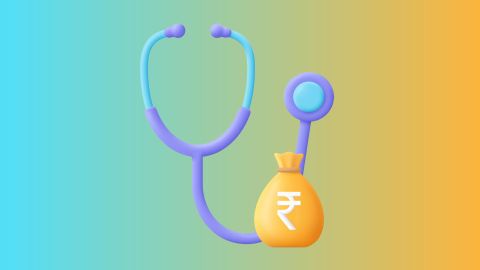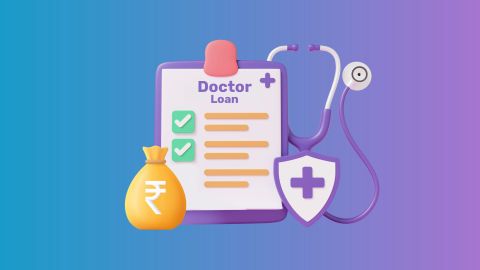Purpose of HIPAA
The primary goal of HIPAA is to protect patient information, enhance healthcare efficiency, and ensure the continuity of insurance coverage across the healthcare ecosystem.
- Protect patient privacy: Establishes national standards to safeguard sensitive patient health information (PHI) from unauthorised disclosure.
- Ensure data security: The HIPAA Security Rule requires administrative, physical, and technical safeguards to protect electronic health information (ePHI) from unauthorised access or misuse.
- Streamline healthcare transactions: Promotes efficient data exchange by standardising electronic transactions, improving interoperability, and reducing administrative costs.
- Empower patients: Grants individuals access to their medical records, the right to request corrections, and control over how their data is shared.
- Enhance portability of health insurance: Ensures continuity of health insurance coverage for individuals changing or losing employment.
- Combat fraud: Aims to minimise fraud, waste, and abuse within the healthcare system through accountability and standardised data handling.
Five Titles of HIPAA Act
Title I: Health Care Access, Portability, and Renewability
Title I focuses on ensuring access to health insurance, maintaining coverage when individuals change jobs, and limiting restrictions based on preexisting conditions. It amends several earlier laws governing employee benefits, public health, and taxation. One of its key goals is to reduce “job lock,” where individuals remain in unsuitable employment simply to retain health insurance. To address this, Title I helps employees and their dependents maintain coverage after leaving a job or changing careers.
Under this Title, group health plans may apply preexisting condition exclusions of up to 12 months, or 18 months for late enrollees. However, individuals can reduce or eliminate this exclusion if they have prior “creditable coverage” with no significant gaps. A break of 63 or more consecutive days without such coverage is considered a significant gap. Creditably covered individuals leaving group plans are entitled to new policies without exclusions, provided they have at least 18 months of continuous coverage.
Some plans, such as long-term care or standalone limited-scope benefits (including vision and dental), are exempt from Title I requirements. If limited benefits are integrated into a major health plan, they must follow the same continuity rules as all other covered services. Plans may calculate continuity separately for certain categories like dental or vision, which can result in shorter coverage periods for those specific benefits.
Title I also eliminates hidden exclusion clauses—for example, provisions requiring an accident to occur while covered by the same contract. Such clauses must be revised to comply with the legislation.
Title II: Preventing Health Care Fraud and Abuse; Administrative Simplification; Medical Liability Reform
Title II establishes frameworks to reduce fraud, safeguard private health information, and standardize healthcare operations. Its most influential components are the Administrative Simplification rules, which set national standards for the transmission, security, and privacy of health information. These standards apply to “covered entities,” including health plans, clearinghouses, and healthcare providers who conduct certain electronic transactions.
Under Administrative Simplification, five major regulations were issued: the Privacy Rule, Security Rule, Transactions and Code Sets Rule, Unique Identifiers Rule, and the Enforcement Rule.
Privacy Rule
The Privacy Rule defines how protected health information (PHI) may be used or disclosed for treatment, payment, and healthcare operations. Covered entities and their business associates must safeguard PHI, provide individuals with access to their records within 30 days of request, and disclose information when required by law. They may release PHI to law enforcement when legally authorized.
PHI can be used for treatment, payment, or operations without written consent, but all other disclosures require authorization. Covered entities must limit disclosures to the minimum necessary and allow individuals to request corrections to their PHI. Privacy notices, staff training, and proper documentation are mandatory. Individuals may file complaints with the appropriate oversight office if they suspect a violation.
A common misconception is that individuals can refuse any disclosure to employers or businesses. In reality, the Privacy Rule restricts what covered entities may disclose; it does not prevent employers or other organizations from requesting information directly from individuals.
2013 Omnibus Rule Update
This update extended privacy and security requirements to business associates and changed the standard for reporting breaches. Instead of proving that harm occurred, entities must show that harm did not occur to avoid reporting a breach. Protections for PHI now last 50 years after an individual’s death, and penalties for noncompliance have increased. Certain requirements may be suspended during officially declared emergencies.
Right to Access PHI
Individuals have the right to obtain copies of their health information, including medical records, imaging, lab reports, and billing history. Providers must honor written requests within 30 days and offer records electronically when possible. Reasonable copying fees may apply, except when records are provided through required electronic functions. Delivery may occur through encrypted or unencrypted email (with acknowledgment of risk), secure messaging, or physical media.
Individuals may also authorize their providers to send PHI directly to a third party.
Disclosure to Relatives
Some healthcare providers interpret the law conservatively and refuse to release basic information to relatives, especially in emergencies. This cautious approach may result in delays confirming whether someone has been admitted or treated. Misinterpretations often stem from policies around hospital directories, especially when patients are unable to express their preferences.
Transactions and Code Sets Rule
This rule aims to improve efficiency by requiring health plans and providers to use standardized electronic transactions for claims, payments, eligibility checks, and other administrative processes. Updated standards now support advanced coding systems and expanded data fields. Key transaction types include:
- 837: health care claim submissions
- NCPDP: retail pharmacy claims
- 835: claim payment and remittance advice
- 834: enrollment and maintenance
- 820: premium payments
- 270/271: eligibility inquiry and response
- 276/277: claim status request and notification
- 278: service review requests and responses
- 999: acknowledgment reports
These standards enhance accuracy, interoperability, and processing speeds across the healthcare system.
Security Rule
The Security Rule applies specifically to electronic PHI (ePHI) and establishes administrative, physical, and technical safeguards.
Administrative safeguards require entities to adopt formal policies, assign security responsibility, restrict access based on job roles, train staff, and implement contingency plans and internal audits.
Physical safeguards regulate physical access to facilities, equipment, and workstations. They require controlled access points, monitored hardware movement, appropriate workspace layouts, and visitor documentation.
Technical safeguards protect data systems and electronic transmissions. They require access controls, authentication measures, integrity monitoring, and encryption across open networks. Entities must maintain documentation, conduct risk assessments, and ensure all systems remain secure.
Unique Identifiers Rule
This rule replaces multiple provider identification systems with a single National Provider Identifier (NPI), a standardized 10-digit number used for administrative transactions. Large institutions may obtain multiple NPIs for separate organizational components. NPIs do not replace state licenses or tax IDs but function as universal identifiers across the healthcare system.
Enforcement Rule
The Enforcement Rule outlines the process for investigating potential violations and imposing civil penalties. For many years, enforcement actions were limited, but more recent cases have resulted in significant penalties, including fines for inadequate risk assessments or improper handling of ePHI. When violations are found, covered entities must implement corrective action plans.
Title III: Tax-Related Health Provisions for Medical Savings Accounts
Title III sets standardized limits for contributions to medical savings accounts and extends eligibility to self-employed individuals and employees covered by high-deductible health plans offered by small employers.
Title IV: Group Health Insurance Requirements
Title IV refines rules for group health plans, including requirements related to coverage for individuals with prior medical issues and clarification of continuation rights under existing laws such as COBRA. It strengthens protections for maintaining health coverage when changing or leaving employment.
Title V: Revenue Offset Provisions
Title V addresses taxation rules relating to employer-owned life insurance policies. It prevents employers from claiming interest deductions on loans taken against such policies and eliminates a specific interest allocation rule applicable to financial institutions.
How HIPAA works?
The Health Insurance Portability and Accountability Act (HIPAA) establishes standards to ensure that healthcare plans in the U.S. are accessible, portable, and renewable. It also sets nationwide guidelines for the secure sharing of medical data to help prevent fraud, taking precedence over state laws unless those laws offer stricter protections.
Since its introduction in 1996, HIPAA has evolved to include standards for the electronic storage and transmission of patient health information. It also incorporates administrative simplification rules designed to enhance efficiency and lower administrative costs through the implementation of uniform national practices.
In 2009, the Health Information Technology for Economic and Clinical Health (HITECH) Act expanded HIPAA’s privacy and security rules. Introduced under the American Recovery and Reinvestment Act, HITECH promotes the adoption of health information technology while addressing key privacy and data security challenges.
Components of the Health Insurance Portability and Accountability Act (HIPAA)
HIPAA is structured around five fundamental components that collectively ensure the protection and proper handling of health information:
- HIPAA Privacy Rule: Establishes nationwide standards for protecting patient health information. It defines Protected Health Information (PHI), outlines permissible uses and disclosures, and grants individuals rights to access and correct their medical records.
- HIPAA Security Rule: Focuses on safeguarding electronic Protected Health Information (ePHI). It mandates administrative, physical, and technical measures such as risk assessments, security responses, and contingency planning.
- HIPAA Breach Notification Rule: Requires covered entities and their business associates to inform affected individuals, the U.S. Department of Health and Human Services (HHS), and in some cases the media, of any breaches involving unsecured PHI.
- HIPAA Enforcement Rule: Specifies the procedures and penalties for non-compliance, including both civil and criminal liabilities.
- HIPAA Administrative Simplification Provisions: Streamlines healthcare operations by standardising electronic transactions and introducing unique identifiers for healthcare providers, employers, and health plans.
Future of HIPAA
In 2018, Bloomberg Law highlighted growing concerns over the privacy risks associated with digital healthcare data, noting the increasing likelihood of revised federal regulations. As fitness apps and GPS-enabled devices collect and share data on everything from daily step counts and heart rates to medications, allergies, and menstrual cycles, maintaining secure standards for storing and protecting personal health information has become increasingly complex.
What Information is Protected Under HIPAA?
HIPAA protects several types of health information, including:
- Medical histories and diagnoses
- Test results and treatment plans
- Prescription records
- Billing information
- Identifiable details such as names, addresses, and social security numbers
HIPAA Effects on Research and Clinical Care
The implementation of the Privacy and Security mandates led to major operational shifts for healthcare providers and institutions. Many practitioners expressed concern about the complexity of the legal requirements, the risk of substantial penalties for violations, the added administrative burden, and the considerable costs of compliance. A 2006 medical journal article highlighted several of these challenges and their impact on day-to-day healthcare operations.
Effects on research
Legislative constraints placed on investigators have reduced the practicality of retrospective, chart-based studies and made prospective evaluations more complex—particularly when reaching out to participants for follow-up information. One university-led study reported a steep decline in completed follow-up questionnaires for patients monitored after a cardiac event, dropping from 96% to 34% after the privacy rules were enforced. Another assessment of a wellness-focused prevention study found that procedural changes caused a 73% fall in participant enrollment, a threefold rise in the time required for recruitment, and a similar increase in average recruitment expenses.
Researchers must now ensure that authorization forms clearly outline how protected health information will be secured, which can unintentionally create barriers to participant involvement. Overall, evidence suggests that these privacy requirements may affect both the efficiency and quality of health-related research. A noted internal medicine professor remarked that while privacy is vital, research is equally important for improving care, and achieving an effective balance remains essential.
Effects on clinical care
The complexity of the legislation and fear of penalties may lead healthcare professionals and institutions to become overly cautious when sharing information—even with parties who have legitimate access. A government review during the early implementation phase found that providers often showed uncertainty about their privacy obligations and sometimes restricted disclosures more than necessary to comply with the rules. This pattern continues to be observed.
At the same time, standardized processes for handling and sharing patient data have helped reduce clinical errors. Better access to accurate information supports informed decision-making and lowers the risk of mistakes caused by incomplete or incorrect records. These measures also strengthen patient safety and outcomes. Additionally, patients gain essential rights, including the ability to access their records, request corrections, and track how their information has been shared—enhancing transparency and engagement in their own care.
Costs of implementation
Ahead of the enforcement of the Privacy and Security requirements, healthcare organizations and individual practices were responsible for meeting compliance standards. Many relied on external experts to interpret the rules and guide them through the necessary steps.
Education and training
Comprehensive staff training is a mandatory component of complying with the Privacy and Security directives. All healthcare personnel must receive initial instruction on the legislation’s policies and procedures, including proper management of protected health information, patient rights, and the “minimum necessary” principle. Training also clarifies what qualifies as protected information—such as clinical documentation, financial records, and other health data. Staff are educated on patient rights, including accessing their records and requesting changes. Regular refresher sessions are strongly recommended to ensure continued awareness of evolving regulations, internal updates, and best practices.
Physical and Technical Safeguards, Policies, and HIPAA Compliance
HIPAA compliance involves both physical and technical safeguards:
- Physical Safeguards: These include controlled access to facilities, ensuring that only authorised personnel can view PHI.
- Technical Safeguards: Encrypting data, using firewalls, and other cybersecurity measures to protect electronic PHI (ePHI).
- Policies: Healthcare providers must establish procedures to ensure that their practices align with HIPAA standards.
HIPAA violations
The oversight office of the federal health department reported that between April 2003 and January 2013, it reviewed roughly 91,000 complaints related to potential regulatory violations. Of these, about 22,000 resulted in enforcement measures such as settlements or monetary penalties, while 521 cases were forwarded to federal authorities for criminal investigation.
Notable incidents involving breaches of protected information and other violations include:
- A major data loss event in 2011 that exposed the records of 4.9 million individuals enrolled in a federal health program.
- One of the highest financial penalties—a $5.5 million sanction issued in 2017—was imposed on a regional health system after unauthorized access was granted to the confidential records of more than 115,000 patients. In another case, a $4.3 million fine was issued in 2010 against a healthcare provider in Maryland for repeatedly failing to provide patients with copies of their records and disregarding follow-up inquiries from federal officials.
- The first criminal case under the legislation occurred in 2011, involving a physician who disclosed a patient’s information to the patient’s employer, falsely claiming the patient posed an “imminent threat to public safety.”
Differences Between Civil and Criminal Penalties
The consequences of regulatory non-compliance differ depending on the type and seriousness of the violation, with penalties ranging from civil fines to criminal charges, as outlined in the table below.
Type of Violation
|
CIVIL Penalty (minimum)
|
CIVIL Penalty (maximum)
|
Individual unaware of violation (and could not have known with reasonable diligence)
|
$100 per violation, with an annual cap of $25,000 for repeated offenses
|
$50,000 per violation, with an annual cap of $1.5 million
|
Violation due to reasonable cause, but not willful neglect
|
$1,000 per violation, with an annual cap of $100,000 for repeated offenses
|
$50,000 per violation, with an annual cap of $1.5 million
|
Violation due to willful neglect but corrected within the mandated period
|
$10,000 per violation, with an annual cap of $250,000 for repeated offenses
|
$50,000 per violation, with an annual cap of $1.5 million
|
Violation due to willful neglect and not corrected
|
$50,000 per violation, with an annual cap of $1,000,000
|
$50,000 per violation, with an annual cap of $1.5 million
|
Type of Violation
|
CRIMINAL Penalty
|
Covered entities and specific individuals who "knowingly" obtain or disclose identifiable health information
|
A fine of up to $50,000 and/or imprisonment for up to 1 year
|
Offenses committed under false pretenses
|
A fine of up to $100,000 and/or imprisonment for up to 5 years
|
Offenses committed with the intent to sell, transfer, or use identifiable health information for commercial advantage, personal gain, or malicious harm
|
A fine of up to $250,000 and/or imprisonment for up to 10 years
|
Recent HIPAA Updates
In recent years, HIPAA has seen several updates to keep up with the fast-evolving digital landscape. These include:
- Increased Penalties: Penalties for non-compliance have been adjusted to deter violations.
- Data Breach Notifications: Organisations are required to notify affected individuals in case of a data breach.
- Expansion of Covered Entities: More entities, such as business associates, are now held accountable for HIPAA compliance.
Conclusion
HIPAA plays an indispensable role in safeguarding patient information and ensuring that healthcare providers maintain the highest standards of data privacy. With stringent rules and significant penalties for non-compliance, medical professionals must adopt modern security measures. If you are looking for financial assistance to upgrade your practice and meet these requirements, consider Bajaj Finserv Doctor Loan, a type of professional loan. It is designed to help doctors invest in technology, comply with regulations, and grow their medical practice.





